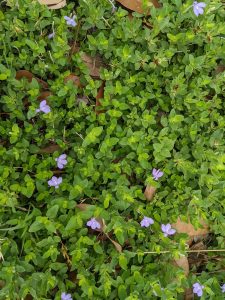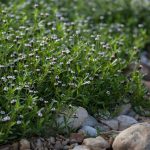Don’t let the goofy name or delicate blooms fool you. Woolly tubetongue is seriously hardy, even in our searing heat.
By now most people are familiar with horseherb (Calyptopcarpus vialis), but there’s another native groundcover that doesn’t get nearly as much love as it should: woolly tubetongue (Justicia pilosella).
Also known as Gregg’s tubetongue, it fills a similar niche in the urbane habitat as horseherb. Though not as ubiquitous, it can be found in the yards of older San Antonio neighborhoods and most parks have at least one patch coexisting with turfgrasses in areas that are not irrigated.

Woolly tubetongue is a low-growing ground cover that can endure mowing as well as light foot traffic. After a trim with the mower or a stray rain shower, it produces dainty pink to purple flowers that are much showier than those of horseherb. The blooming period is from April to October, and this summer it was one of the few plants I saw constantly blooming under mesquites even during July and August!
Over time, the plants spread through seed and runners forming little colonies. It can grow in full sun but appreciates afternoon shade.
Adding flowering plants to your garden not only increases aesthetics, but also benefits wildlife. Even small plants like woolly tubetongue — that consistently bloom throughout the summer —help support pollinating insects through lean times when less hearty plants stop producing. In addition to the flowers, tubetongue is the host plant for various checkerspot butterfly caterpillars.
Woolly tubetongue is not readily available in the nursery trade, but neither was horseherb until a few years ago. Perhaps one day increased interest will create demand, and just like horseherb, more local shops will carry it.
Until then, enterprising gardeners can try their hand at propagating it. It’s easy to transplant and grows easily from root cuttings as well.




